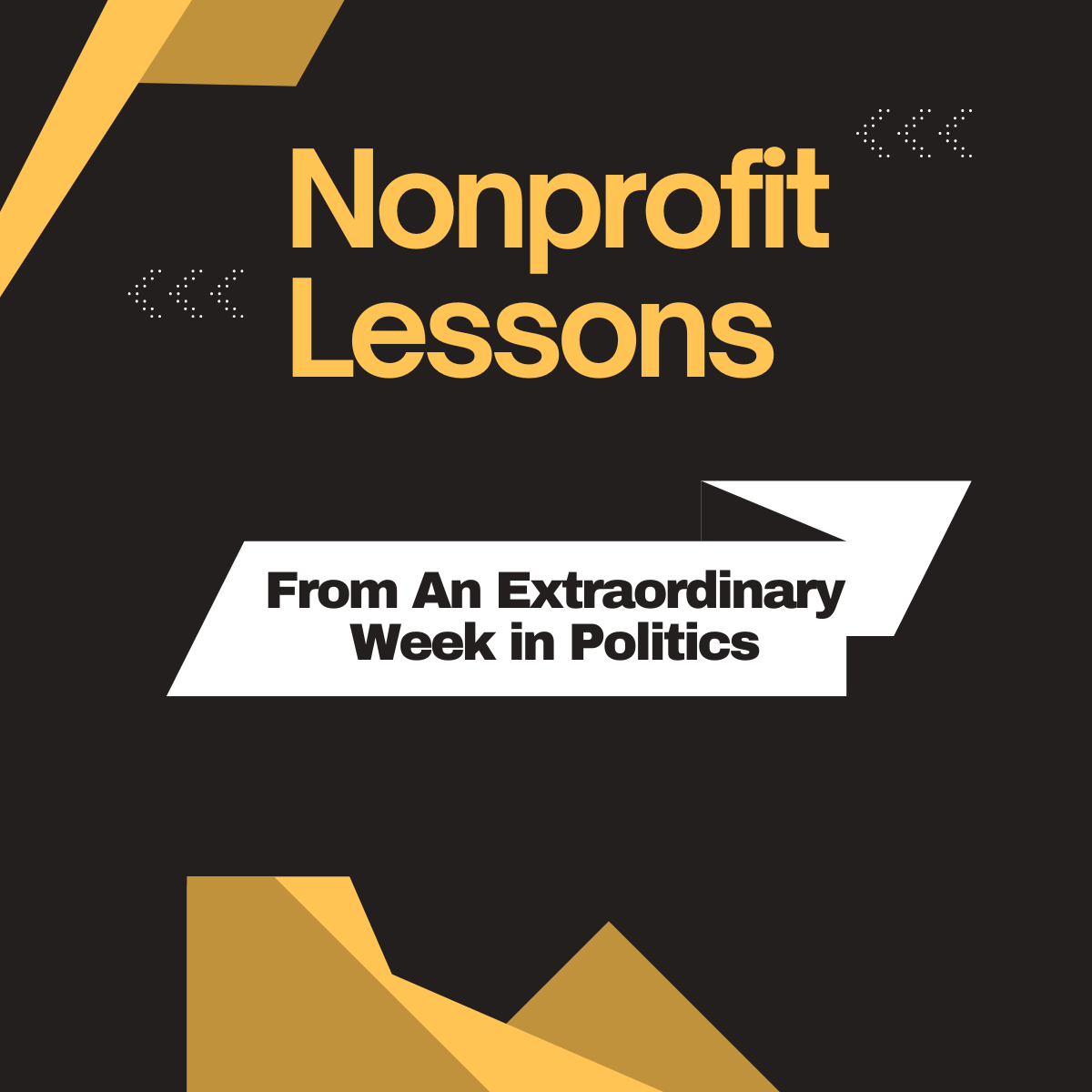What a week in politics. In six days, Democrats went from a stunning across-the-country electoral sweep to a total cave-in on the shutdown. In both circumstances
— surprising results and a predictable collapse — it’s useful to examine more closely.
What role did messaging and strategy play in the outcome – and what lessons we can draw from how things turned out. So, in today’s post, six takeaways from all that’s happened. Let’s start with the shutdown and its end.

Senate Democrats set out to prove that, despite seven months of evidence to the contrary, they had what it takes to stand up to Trump and the MAGA Republicans. They did a lot that was right including a laser-like focus on health care and skyrocketing Affordable Care Act premiums. But, in the end, they caved. At least in the short term, the nothing-to-show-for-it ending is helps reaffirm that they remain way out of sync with the Democratic base.
They chose an “oh well, we tried” exit strategy instead of a determined pivot making clear that the shutdown may be over, but they will never yield in the battle to protect peoples’ access to health care.
Nonprofit Takeaway: When planning a strategy, play chess not checkers. Work out the different scenarios by which events might unfold and know how you will position yourself. For example, if pressing for an important piece of legislation, know right from the start whether your aim is make-or-break immediate passage or just a step in the right direction. Then, manage peoples’ expectations accordingly.

Republicans seem to have carried the day in the shutdown showdown. But it may have come at a long-term price. The month-long focus on their opposition to the Democrats’ clearly-focused demand has helped cement the GOP’s reputation for heartless indifference to peoples’ health care struggles. A vulnerability they created with massive Medicaid cuts has now been amplified and could lead to serious 2026 electoral issues for GOP candidates. As Democratic strategist Dan Pfieffer put it, Democrats may end up having lost the battle, but winning the war.
Nonprofit Takeaway: It’s the mirror image of the Democratic takeaway above. Smart strategies aren’t about winning a moment in time. They’re about building winning momentum over time. The question we must always ask is “How is this moment likely to turn out and where will that lead?”

Much has been made of the fact that Democrats (who had very successful elections) focused on affordability issues – the rising costs of housing, groceries and health care. Zohran Mamdani led the way by boldly staking his entire campaign on this simple proposition. “Zohran Mamdani is running for mayor to lower the cost of living for working class New Yorkers.”
With a different mix of policies, but the same single-minded focus, Abigail Spanberger in Virginia and Micki Sherrill in New Jersey made affordability the centerpiece of their campaigns. That stands in contrast to the national focus all year on Donald Trump and his far-reaching assault on the pillars of our democracy.
All three candidates made clear their opposition to the Trump agenda. But quickly turned the conversation back to the everyday problems menacing peoples’ lives.
Nonprofit Takeaway: On whatever issue you work on, always make sure you know as much as possible about what is on your audience’s mind, how they see things. Then do all you can to locate your message in that context. Most important of all, resist the temptation to assume that your audience sees things exactly the way you do. Write to their experience, not your own inclinations.

In the post-election analysis of Donald Trump’s 2024 victory, many pundits pointed to the power of his anti-trans ad with the oft-cited tagline “She’s for they/them. Donald Trump is for you.”
That led several GOP candidates including Winsome Earle-Sears in the Virginia governor’s race to lean heavily into the same line of attack this year. Both election results and polling make clear that the anti-trans messaging had far less impact this time.
I believe this is the reason why. To the extent the Trump ad succeeded, it had more to do with its ability to portray Kamala Harris as someone out-of-touch with working class voters. In other words, the “they/them” ad worked not because Democrats cared about trans kids facing harassment, but because their circle of compassion didn’t seem to extend to working class voters who felt unheard and unseen.
Nonprofit Takeaway: In thinking through which of your arguments are working or not working, remember that people don’t consume your message in isolation. They tend to look beyond the individual argument to the larger context.

After last week’s results, a conversation quickly emerged – with a special focus on Democratic Socialist Mamdani – on who is now the face of the Democratic Party.
Alexandria Ocasio-Cortez had an insightful take:
“ I don’t think that our party has to have one face. Our country doesn’t have one face. It’s about all of us as the team together, and we all understand the assignment. Our assignment everywhere is to send the strongest fighters for the working class wherever possible.
“In some places like Virginia in the gubernatorial seat, that’s going to look like Abigail Spanberger. In New York City, unequivocally, it is Zorhan Mamdani.”
Nonprofit Takeaway: Always be alert to two dimensions in your choice of a messenger. First ask yourself if the person is the right one to convey the substance of the message. But then turn to a second issue. Is the messenger the right person to credibly convey the message to the audience in question?

In the aftermath of the nearly 2 to 1 victory for California’s Prop 50, Gavin Newsom’s decision to fight fire with fire on redistricting looks really smart. But, at the outset, the success of his bold move was far from a sure thing. And, if it went down in defeat, chances are Newsom’s presidential ambitions would have gone down with it.
He deserves credit for having the courage to go forward. But we should also recognize the second element in his success. He matched the boldness with a skill to make sure the risk paid off. Here’s one example: Newsom knew he would need to convince voters deeply opposed to gerrymandering to approve temporarily turning to it. So, he built in not only a firm end date to the redistricting, but a clear affirmation of the state’s long-term commitment to an independent commission drawing congressional district lines.
Nonprofit Takeaway: Don’t always play it safe. There are clear rewards and payoffs to taking risks. But follow this guidepost: The riskier the move you are considering making, the more thorough and clear-eyed your preparation must be.

There’s a lot to learn from watching political messaging and strategizing. Some of it provides models to imitate and some missteps to avoid. We will keep an eye on both as we move closer to next year’s high-stakes elections.






